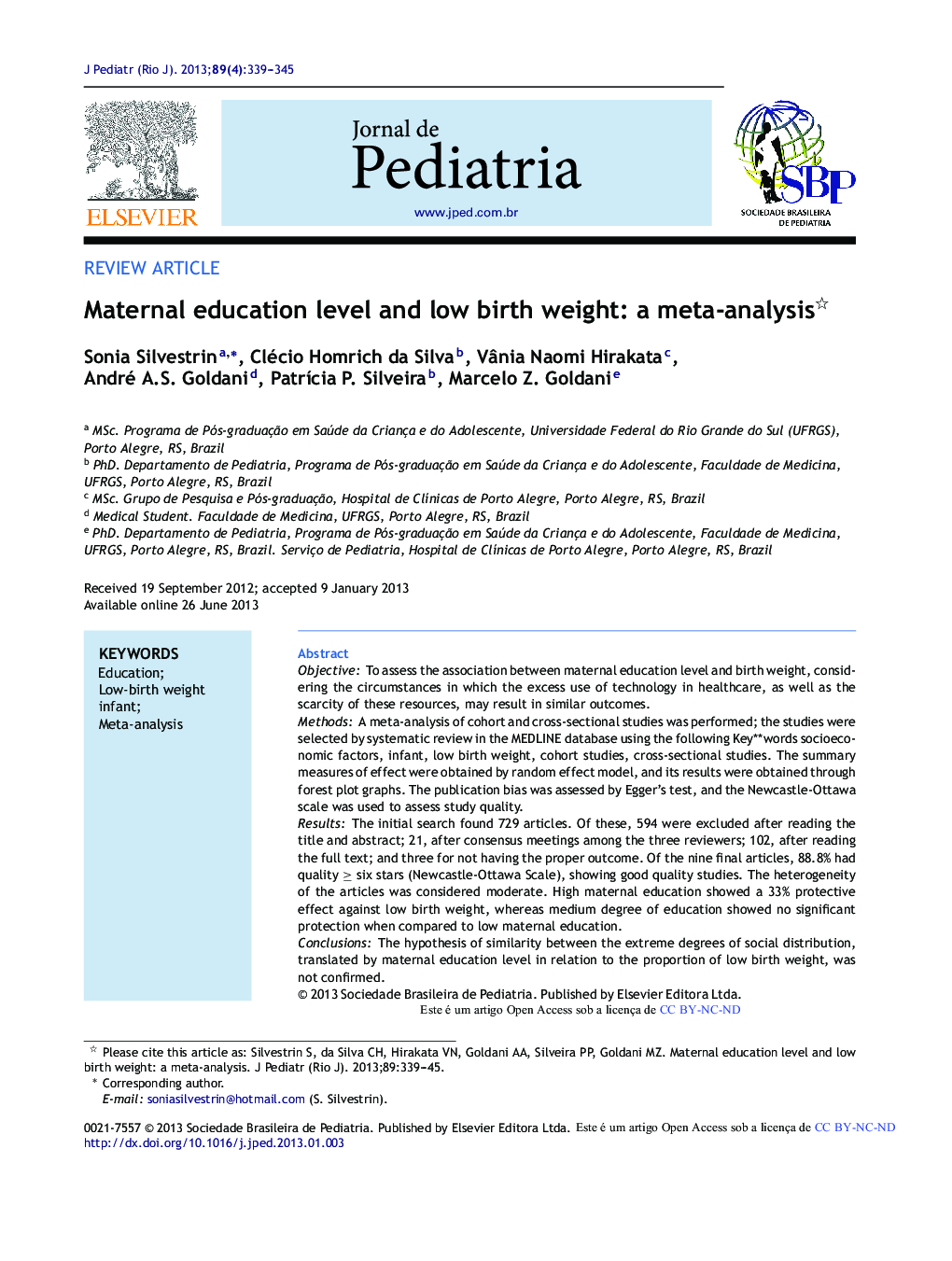| Article ID | Journal | Published Year | Pages | File Type |
|---|---|---|---|---|
| 4154076 | Jornal de Pediatria | 2013 | 7 Pages |
ObjectiveTo assess the association between maternal education level and birth weight, considering the circumstances in which the excess use of technology in healthcare, as well as the scarcity of these resources, may result in similar outcomes.MethodsA meta-analysis of cohort and cross-sectional studies was performed; the studies were selected by systematic review in the MEDLINE database using the following Key**words socioeconomic factors, infant, low birth weight, cohort studies, cross-sectional studies. The summary measures of effect were obtained by random effect model, and its results were obtained through forest plot graphs. The publication bias was assessed by Egger's test, and the Newcastle-Ottawa scale was used to assess study quality.ResultsThe initial search found 729 articles. Of these, 594 were excluded after reading the title and abstract; 21, after consensus meetings among the three reviewers; 102, after reading the full text; and three for not having the proper outcome. Of the nine final articles, 88.8% had quality ≥ six stars (Newcastle-Ottawa Scale), showing good quality studies. The heterogeneity of the articles was considered moderate. High maternal education showed a 33% protective effect against low birth weight, whereas medium degree of education showed no significant protection when compared to low maternal education.ConclusionsThe hypothesis of similarity between the extreme degrees of social distribution, translated by maternal education level in relation to the proportion of low birth weight, was not confirmed.
ResumoObjetivoAnalisar a associação entre grau de escolaridade materna e peso de nascimento, considerando-se a hipótese de que a utilização em excesso das tecnologias na área da saúde, assim como a escassez de recursos, pode produzir desfechos similares.MétodosRealizou-se uma meta-análise com estudos transversais e de coorte, selecionados por revisão sistemática na base de dados bibliográficos MEDLINE com os descritores: socioeconomic factors; infant, low birth weight; cohort studies; cross-sectional studies. As medidas de sumário de efeito foram obtidas pelo modelo de efeito aleatório, e os seus resultados apresentados por intermédio dos gráficos Forest Plot. O viés de publicação foi analisado pelo Teste de Egger, e a avaliação da qualidade dos estudos utilizou a Escala de Newcastle-Ottawa.ResultadosA busca inicial encontrou 729 artigos. Destes, foram excluídos 594, após a leitura do título e do resumo; 21, após reuniões de consenso entre os três revisores; 102, após leitura do texto completo; e três, por não possuírem o desfecho adequado. Dos nove artigos finais, 88,8% apresentavam uma qualidade igual ou superior a seis estrelas (Escala de Newcastle-Ottawa), configurando boa qualidade aos estudos. A heterogeneidade dos artigos foi considerada moderada. A escolaridade materna elevada mostrou um efeito protetor de 33% sobre o baixo peso ao nascer, enquanto que o grau médio não apresentou proteção significativa, quando comparados à escolaridade materna baixa.ConclusõesA hipótese de similaridade entre os graus extremos da distribuição social, traduzidas pelo nível de escolaridade materna, em relação à proporção de baixo peso ao nascer, não foi confirmada.
